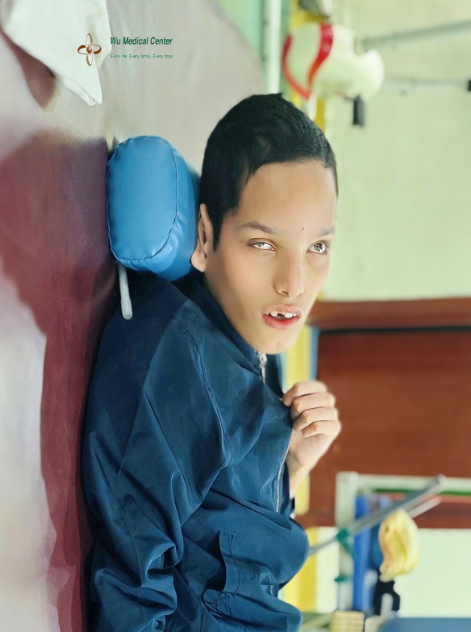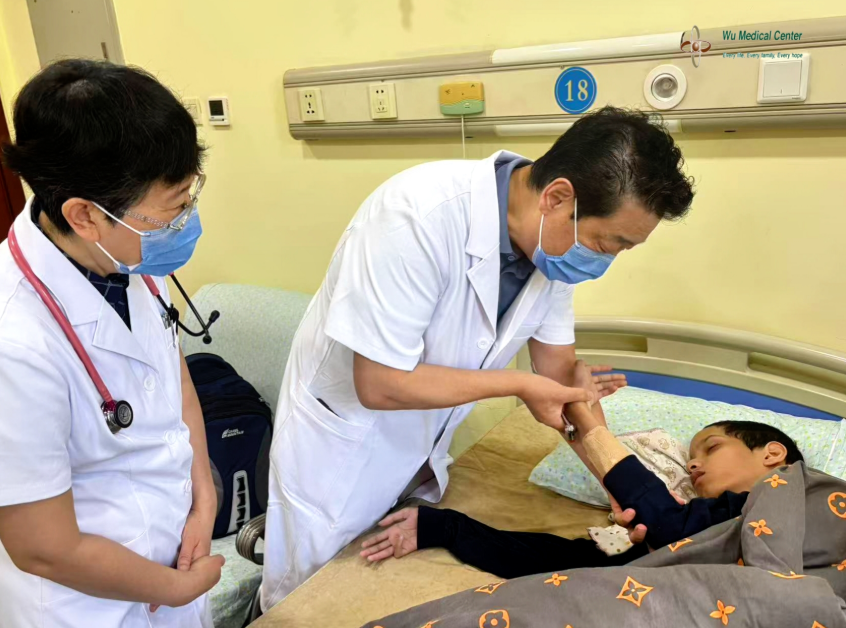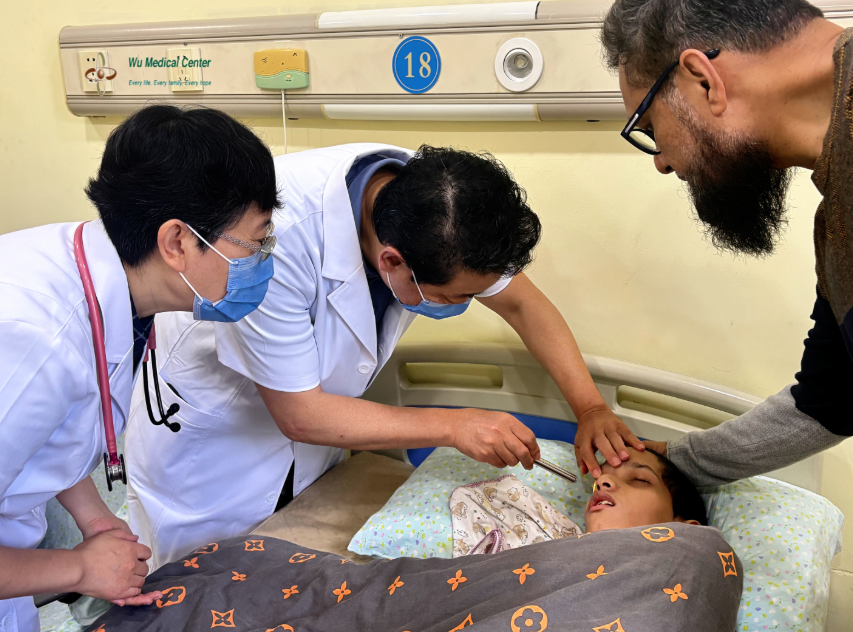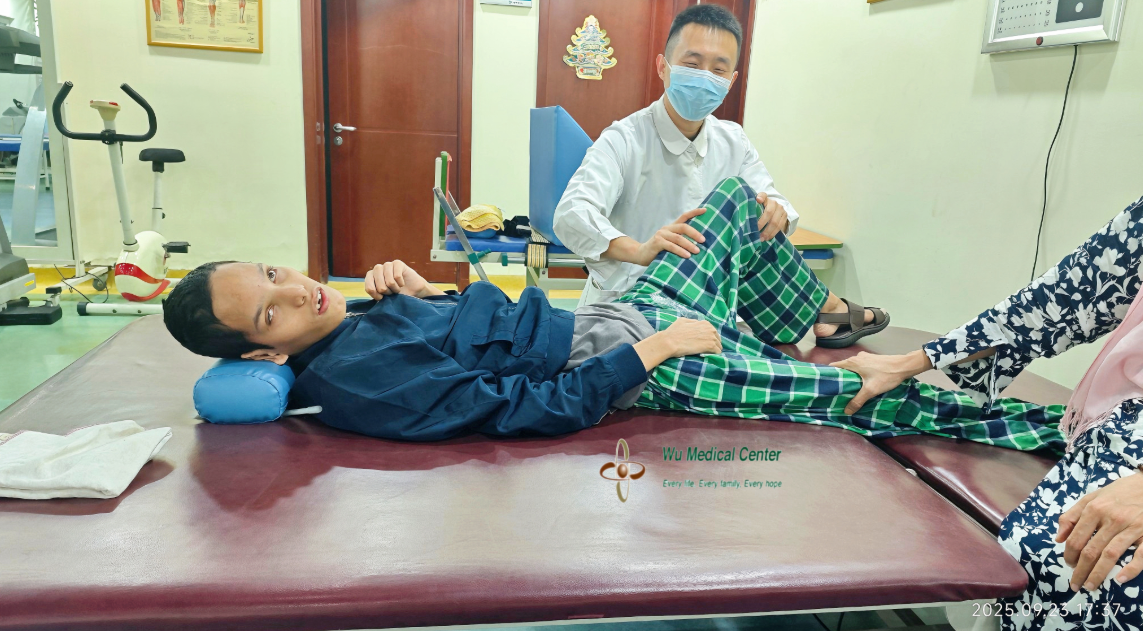Muhammad Ahmed Mujahid-1. Retinopathy of Prematurity (ROP) Stage V; 2. Sequelae of Brain Injury; 3. Epileptic Syndrome.-(Pakistan)2
 Patient Name: Muhammad Ahmed Mujahid
Patient Name: Muhammad Ahmed Mujahid
Gender: Male
Age: 15 years old
Nationality: Pakistan
Diagnosis: 1. Retinopathy of Prematurity (ROP) Stage V; 2. Sequelae of Brain Injury; 3. Epileptic Syndrome.
Before Treatment:
The patient was admitted primarily due to "visual impairment, delayed motor and cognitive development, and recurrent seizures for 10 years." Currently, he presented with visual impairment, recurrent seizures (mainly generalized), speech difficulties, motor and cognitive disabilities. He had poor neck support and weak back muscles. His limb muscle strength was deteriorating, and he had joint deformities. He could stand and walk with assistance but was very prone to falling. He was currently taking Topiramate, Sodium Valproate, Levetiracetam, Risperidone, Nitrazepam, and Melatonin. He experienced seizures approximately 2-5 times a day, each lasting about 10-30 seconds. His sleep quality was poor; he was restless at night and slept excessively during the day, often shouting when awake.
Physical Examination:
The patient’s blood pressure was 95/52 mmHg, and heart rate was 54 beats per minute. He was developmentally delayed, malnourished, and had a lean physique. There was a noticeable bony prominence on his forehead. Breath sounds in both lungs were clear, with no significant dry or wet rales noted. His heart rate was slow and irregular, with no significant murmurs detected in any valve area. Abdominal examination revealed palpable bowel sounds, with no tenderness or rebound pain. There were no abnormalities noted upon palpation of the liver and spleen. There was no edema in both lower limbs.
Neurological Examination:
The patient was alert but had poor mental status. He had speech difficulties and was unable to speak. Both eyes showed no light perception, with the right eye exhibiting white cloudy deposits, and there was no pupillary response to light in either eye. His forehead wrinkles were symmetrical, and the nasolabial folds on both sides were deep. He had poor neck support and maintains a chin-down position. He could turn over independently, but his back muscles were weak, and when assisted in standing and walking, he displayed a forward abdominal protrusion and was prone to falling. His hand grip function was poor. There was observable spontaneous movement in all four limbs, with muscle strength rated at grade 4-. The muscle tone in his limbs was generally normal. Bilateral knee reflexes were active, while the Achilles reflex was not elicited. Bilateral Babinski sign was weakly positive. He was unable to cooperate during testing for deep and superficial sensation or coordinated movements.
Treatment Process:
Upon admission, the patient was definitively diagnosed with "Retinopathy of Prematurity (ROP) Stage V, sequelae of brain injury, and epilepsy." He was treated with mesenchymal stem cells and neural stem cells to repair the retina, optic nerve, and brain nerves, along with supportive CAST therapy to nourish the retina and brain nerves, improve circulation, and regulate immunity, combined with comprehensive rehabilitation therapy.
Post-Treatment:
The patient shows increased light sensitivity in both eyes, with a pupillary light reflex observable in the left eye. When light is shone into the right eye, the patient will stop any hand movements and attempt to locate the light source visually. His muscle strength in the limbs has improved to grade 4+, and his mobility has shown noticeable improvement. His abdominal and back strength has increased, allowing him to transition from lying down to sitting up more easily. He can now walk independently for short distances. His cooperation during rehabilitation training has also improved. His sleep pattern has become more regular, with nighttime sleep lasting 4-6 hours, and instances of shouting have significantly decreased, allowing for a reduction in the dosage of Nitrazepam. Cardiac function has improved, with a reduction in arrhythmic episodes; his heart rate is maintained between 70-80 beats per minute.



